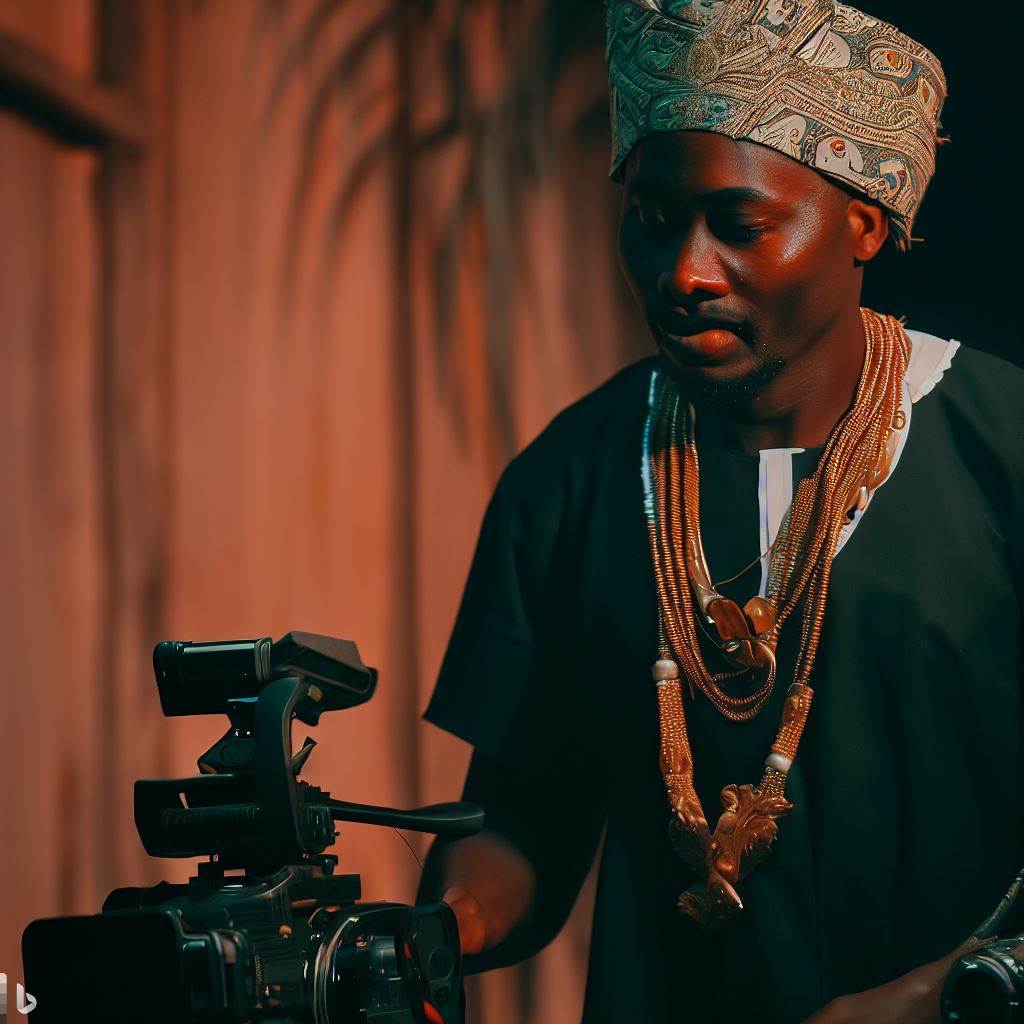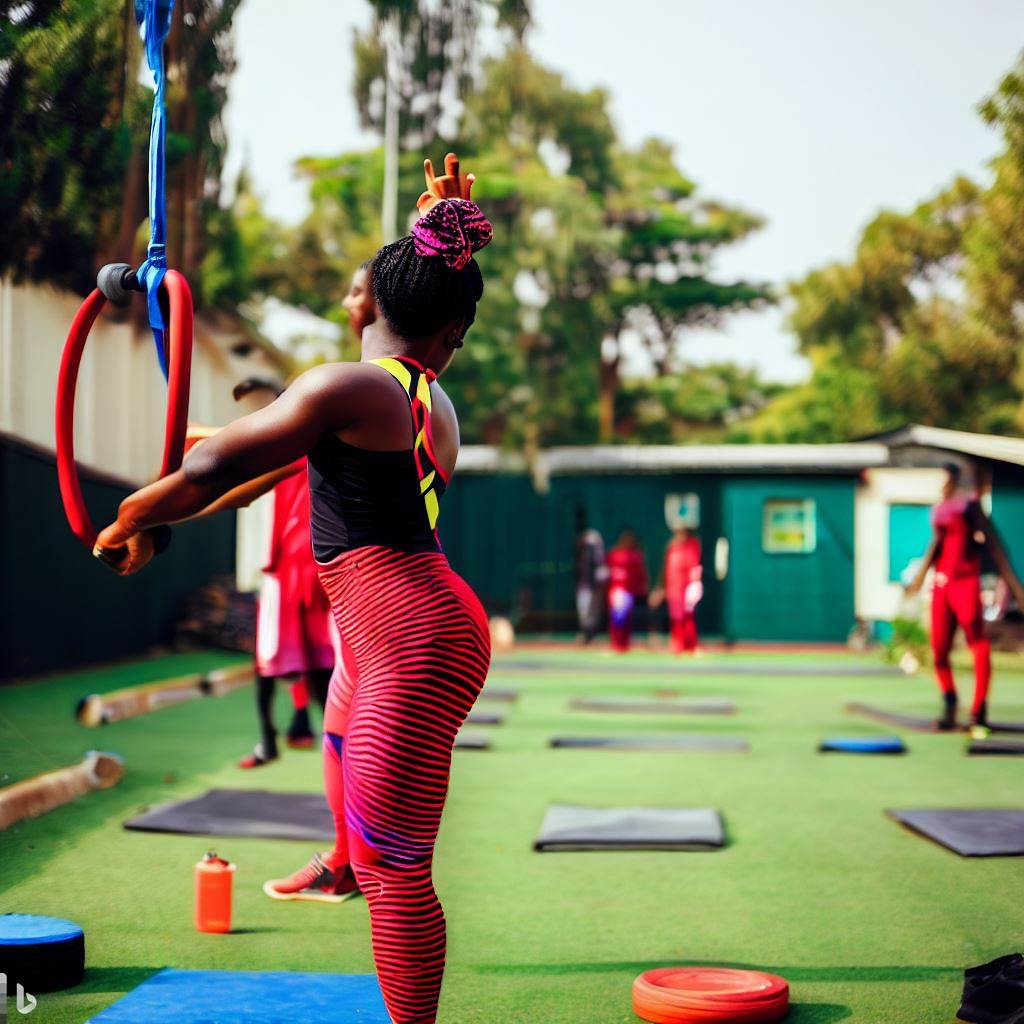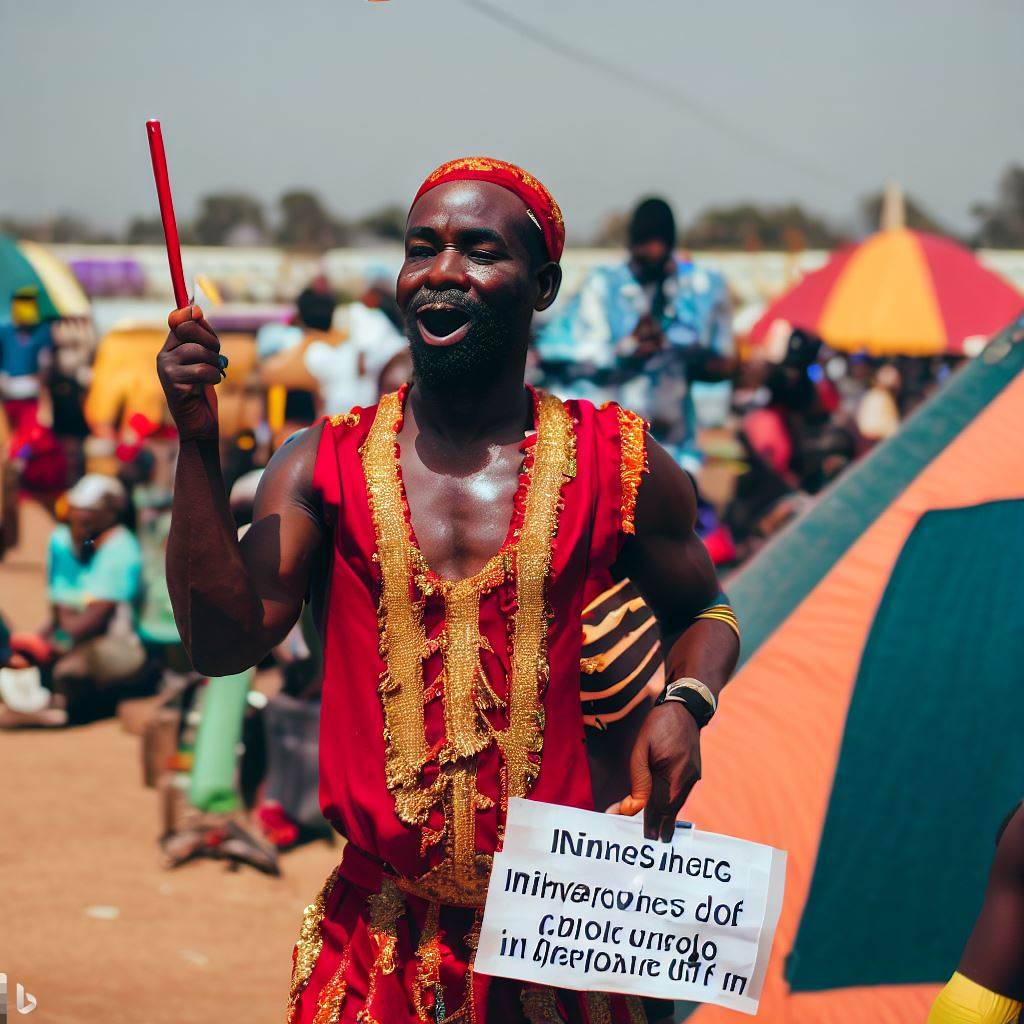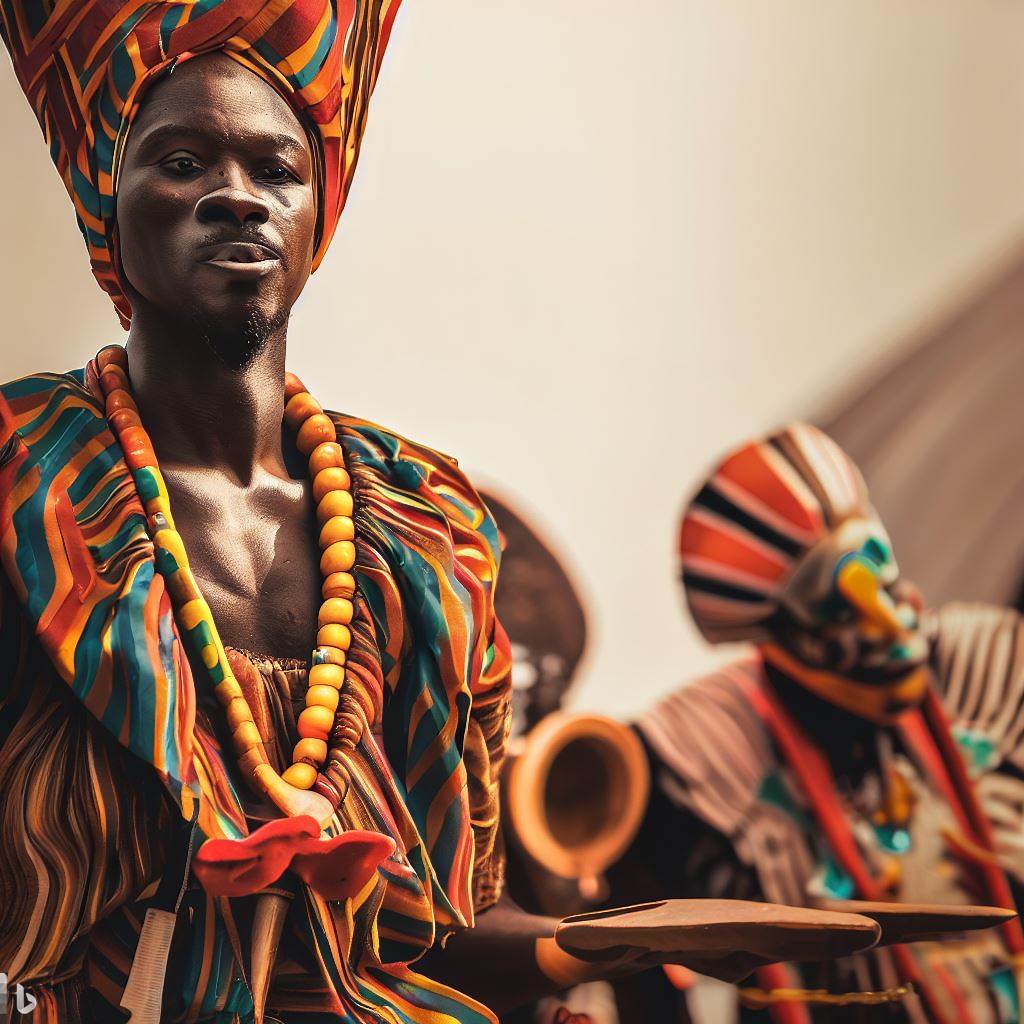Introduction
The role of cinematography in Nigeria’s cultural representation is of great significance.
This topic explores the impact of Nigeria’s film industry, known as Nollywood, on cultural representation.
Transitioning from the growth of Nollywood, we delve into the specific role cinematography plays in this context.
Definition of Cinematography
Cinematography is the art and technique of capturing moving images on film or digitally.
It plays a crucial role in filmmaking, as it helps in visually conveying the story and setting the overall tone and mood of the film.
Key elements of cinematography include camera angles, lighting, framing, color, and movement. These elements work together to create a visually appealing and meaningful film.
key elements of cinematography
- Camera angles: The choice of camera angles can significantly impact how the audience perceives a scene.
A low-angle shot can make a character appear powerful or dominant, while a high-angle shot can make them appear vulnerable or weak. - Lighting: Lighting is a fundamental aspect of cinematography. It helps create the desired atmosphere and can enhance the mood or emotion of a scene.
Different lighting techniques, such as high-key lighting or low-key lighting, can be used for different effects. - Framing: Framing refers to how elements are arranged within the frame. It helps direct the audience’s attention and can contribute to the composition and aesthetic appeal of a shot.
Techniques like the rule of thirds or symmetry can be used to create visually pleasing compositions. - Colour: The choice of colour palette can greatly impact the mood and tone of a film. Colours can be used symbolically to convey certain emotions or themes.
Warm colours like red or orange can evoke feelings of warmth or intensity, while cool colours like blue or green can create a sense of calm or melancholy. - Movement: The movement of the camera or subjects within a frame can add dynamism and energy to a shot.Techniques like tracking shots, dolly shots, or handheld shots can be used to create different effects.
Smooth movements can create a sense of tranquillity, while shaky or erratic movements can convey tension or chaos.
The importance of cinematography in Nigeria’s cultural representation cannot be overstated.
Nigerian cinema, popularly referred to as Nollywood, has gained international recognition for its unique storytelling and cultural representation.
Cinematography plays a significant role in bringing these stories to life and showcasing Nigeria’s diversity and richness.
Through well-executed cinematography, Nigerian filmmakers are able to capture the nuances and intricacies of Nigerian culture.
Cinematography in Nigerian Films
Within the Nigerian film industry, also known as Nollywood, cinematography plays a significant role in conveying the country’s rich cultural heritage.
Nigerian filmmakers skilfully utilise cinematography techniques to represent various aspects of Nigerian culture, capturing vibrant colours, traditional costumes, and cultural symbols in their films.
Additionally, the importance of showcasing the diverse landscapes and settings of Nigeria cannot be overstated.
Let us delve into the world of Nigerian cinematography and explore how it contributes to the country’s cultural representation.
A. Nigerian Filmmakers Utilize Cinematography to Represent Culture
Nigerian filmmakers understand the power of visuals in storytelling.
To effectively represent Nigerian culture, they employ specific cinematography techniques to create a distinct aesthetic.
From the visual style to the framing and composition, each shot is carefully crafted to immerse the audience in the cultural backdrop of the story.
B. Use of Vibrant Colors, Traditional Costumes, and Cultural Symbols
Cinematography in Nigerian films is an art form that celebrates the country’s vibrant and diverse culture.
Colors play a crucial role in accentuating the energy and vivacity of Nigerian traditions.
The use of bright and bold hues within the film’s visual palette evokes a sense of celebration and pride in cultural heritage.
Traditional costumes are another vital aspect of Nigerian cinematography.
The detailed and exquisite attire worn by the characters serves as a visual representation of Nigeria’s rich cultural diversity.
Each ensemble reflects a specific ethnic group, showcasing the multiplicity of traditions within the country.
Moreover, Nigerian culture is filled with symbolic objects that hold deep cultural meaning.
Cinematographers strategically incorporate these symbols into their films to convey messages and highlight cultural values.
Whether it’s the use of the talking drum, the kolanut, or the masquerades, these cultural symbols provide a unique visual language that connects the audience with Nigeria’s traditions and customs.
C. Importance of Capturing Nigerian Landscapes and Settings
Nigeria is a country blessed with breathtaking natural landscapes and architectural wonders.
Nigerian filmmakers recognise the significance of showcasing these landscapes and settings as they add depth and authenticity to their narratives.
From the bustling streets of Lagos to the serene Niger Delta, each location tells a unique story and contributes to the overall cultural representation.
By capturing the vastness of Nigeria’s landscapes, cinematographers allow the audience to experience the varied environments and appreciate the diversity within the country.
Whether it’s the idyllic countryside or the dynamic urban scenes, the cinematography vividly portrays the different facets of Nigerian life and culture.
Transform Your Career in Nigeria
Discover unmatched expertise with our personalized Career Consulting service. Navigate Nigeria’s job market with a strategy tailored just for you.
Get StartedCinematography plays a pivotal role in representing Nigerian culture in the country’s films.
Through the use of vibrant colours, traditional costumes, and cultural symbols, Nigerian filmmakers immerse the audience in the richness and diversity of Nigerian traditions.
Additionally, capturing the landscapes and settings of Nigeria adds authenticity to the storytelling, allowing viewers to connect with the cultural backdrop.
The art of cinematography in Nigerian films has become a powerful tool for cultural representation, showcasing the beauty, traditions, and values of the Nigerian people.
Read: The Impact of Nigerian Music Publishers on Artistes
Creating Atmosphere and Emotion
A. How cinematography helps in creating the desired atmosphere and emotion in Nigerian films
Cinematography plays a crucial role in creating the desired atmosphere and emotion in Nigerian films.
One way cinematography achieves this is through the use of lighting.
- Lighting can convey different moods and tones in a scene.
- For example, low-key lighting with shadows can create a sense of suspense or mystery.
- In contrast, high-key lighting with bright and evenly distributed light can evoke a feeling of happiness or joy.
- The use of lighting can also emphasise certain aspects of a character or a scene, adding depth and significance.
B. Use of lighting to convey different moods and tones
Camera movements also impact the viewer’s perception in Nigerian films.
- A steady and stable camera can create a sense of security and calmness, allowing the viewer to focus on the story.
- In contrast, a shaky camera adds a sense of realism and tension, immersing the audience in the action.
- The movement of the camera can also highlight the dynamics between characters, such as during an intense argument or chase scene.
- Different angles, such as low angles or high angles, can influence how the viewer perceives the characters and the situations they are in.
C. Impact of camera movements and angles on the viewer’s perception
Cinematography contributes to the overall atmosphere and emotion by controlling the visual elements in Nigerian films.
- The use of colours, for example, can evoke specific emotions.
- Warm colours like reds and yellows create a sense of warmth and intimacy, while cool colors like blues and greens portray a feeling of calmness or sadness.
- The framing of shots also plays a role in creating atmosphere and emotion.
- A close-up shot of a character’s face can capture their emotions and create a connection with the viewer.
- Wide shots, on the other hand, can establish a sense of scale and emphasise the environment in which the story takes place.
Cinematography is essential in creating the desired atmosphere and emotion in Nigerian films.
Through the use of lighting, camera movements, angles, colours, and framing, filmmakers can manipulate the viewers’ perception and evoke specific emotions.
The visual elements in cinematography work together to bring out the story’s cultural representation and engage the audience on a deeper level.
Read: Freelance vs Full-Time: Sound Editing Careers in Nigeria

Visual Storytelling
A. How cinematography contributes to storytelling in Nigerian films
Cinematography plays a crucial role in storytelling within Nigerian films, using various techniques to enhance the narrative and engage the audience.
- Cinematography contributes to storytelling in Nigerian films by setting the mood and atmosphere through visual techniques such as lighting and colour grading.
These elements help to create the desired emotional impact on the audience. - Visual metaphors and symbolism are frequently used in Nigerian films to convey deeper meanings and explore cultural themes.
Through cinematography, filmmakers utilise objects, settings, and actions to represent abstract concepts or evoke certain emotions. - Shot composition and framing are essential in conveying messages in Nigerian films. The way a scene is framed can emphasise certain elements and create a specific visual impact on the audience.
For example, a close-up shot of a character’s face can convey their emotions and thoughts more effectively. - The placement of characters within a shot can also communicate relationships, power dynamics, and character development.
Framing techniques such as rule of thirds or leading lines guide the viewer’s attention and enhance the overall storytelling. - The use of camera movements, such as pans, tilts, and tracking shots, adds dynamics to Nigerian films.
These movements provide a sense of movement and allow for a more immersive experience, making the storytelling more engaging. - Depth of field, another cinematographic technique, helps to separate foreground and background, highlighting important elements within the frame.
This technique draws the audience’s attention to specific details that contribute to the narrative.
B. The use of visual metaphors and symbolism
The use of visual metaphors, symbolism, camera movements, and special effects further enriches the narrative, providing a unique cultural representation.
C. The importance of shot composition and framing in conveying messages
Through visual techniques, such as lighting, shot composition, and framing, filmmakers can effectively engage the audience and convey messages.
Read: Interpreter vs. Translator: Key Differences in Nigeria
Preserving Cultural Heritage
Cinematography has played a pivotal role in preserving Nigeria’s rich cultural heritage onscreen.
Through accurate representations and visual storytelling, it promotes cultural pride and identity among its audience.
A. Cinematography as a Preservation Tool
1. Capturing Authenticity: Cinematography allows filmmakers to showcase Nigeria’s cultural traditions, customs, and practices in their truest form.
2. Immersive Visual Experience: By using various visual techniques, cinematographers transport the audience into the heart of Nigerian culture, fostering a deeper understanding and appreciation.
3. Documenting Intangible Heritage: Cinematography immortalises intangible cultural elements such as folklore, music, dances, and rituals that might otherwise be lost over time.
B. The Role of Cultural Accuracy
- Accurate Representation: Cinematography ensures that Nigeria’s cultural heritage is portrayed authentically, avoiding misinterpretations or misrepresentations.
- Historical Significance: Cultural accuracy in cinematography helps educate viewers about the historical context and background of various traditions.
- Preserving Language and Dialects: By showcasing Nigeria’s diverse language landscape, cinematography helps in the preservation and revitalisation of endangered languages.
C. Promoting Cultural Pride and Identity
- Emotional Connection: Cinematography creates an emotional bond between the audience and Nigeria’s cultural heritage by depicting relatable stories and characters.
- Cultural Education: Through visual narratives, cinematography educates both Nigerians and the global community about the richness and diversity of Nigerian culture.
- Inspiring Cultural Revival: By presenting cultural practices in a visually captivating manner, cinematography inspires younger generations to embrace and revitalise their heritage.
It helps create a more inclusive and enriched society where people of all backgrounds can thrive while celebrating their unique heritage.
Read: Animation Directing: Nigeria vs. The Global Scene
Challenges and Future Prospects
A. Identifying Challenges Faced by Cinematographers in Nigeria
- Limited funding and inadequate resources for producing high-quality films.
- Inconsistent government support and lack of favourable policies for the film industry.
- Limited access to advanced cinematography equipment and technologies.
- Lack of formal training and educational institutions specialising in cinematography.
- Difficulties in finding and retaining talented and skilled cinematographers.
- Inadequate recognition and appreciation for the importance of cinematography in Nigerian films.
B. Discussing the Potential for Growth and Improvement in Cinematography Techniques
- Increasing awareness and importance of quality cinematography among filmmakers and audiences.
- Emerging talents with a passion for cinematography are entering the Nigerian film industry.
- Collaborations and partnerships with international film industries can enhance skills and knowledge.
- Exploring and embracing different cinematographic styles and techniques to create unique visual experiences.
- Investing in training programs and workshops to improve the technical skills of Nigerian cinematographers.
- Promoting cinematography as a lucrative career option to attract more young talents.
C. The Role of Technology and Innovation in Shaping the Future of Cinematography
- Advancements in digital cameras and editing software have led to better quality films.
- Access to affordable and portable equipment has democratised the film-making process.
- Virtual reality (VR) and augmented reality (AR) offer new possibilities for immersive cinematography experiences.
- The use of drones and aerial cinematography has become more prevalent, adding a unique perspective to films.
- Continuous innovation in lighting techniques allows cinematographers to create specific moods and atmospheres.
- Emerging technologies like artificial intelligence (AI) can revolutionize cinematography in the future.
Nigerian cinematographers face various challenges, including limited funding, lack of resources, and inadequate recognition.
However, there is immense potential for growth and improvement in cinematography techniques.
The industry can benefit from collaborations, training programs, and embracing new technologies.
Despite the challenges, the future of cinematography in Nigeria looks promising, and with the right support, Nigeria has the potential to become a major player in the global film industry.
Conclusion
Cinematography plays a crucial role in representing Nigerian culture on screen.
Throughout this blog section, we have highlighted the key points of how cinematography impacts cultural representation in Nigeria.
By using visual techniques, cinematographers capture the essence of Nigerian traditions, lifestyles, and values.
It allows the audience to connect with the rich heritage and diverse cultural aspects of the country.
Furthermore, cinematography showcases Nigerian stories, history, and societal issues, bringing them to a global platform.
The significance of cinematography cannot be overstated, as it contributes to the preservation and promotion of Nigerian culture.
In the future, we can expect Nigerian cinematography to further evolve and gain recognition internationally.
With advancements in technology, filmmakers will have more tools at their disposal to authentically portray Nigerian culture.
As the industry grows, we anticipate more diverse stories and perspectives being showcased on screen.
Cinematography will continue to be a powerful medium for representing and preserving Nigerian culture for generations to come.




